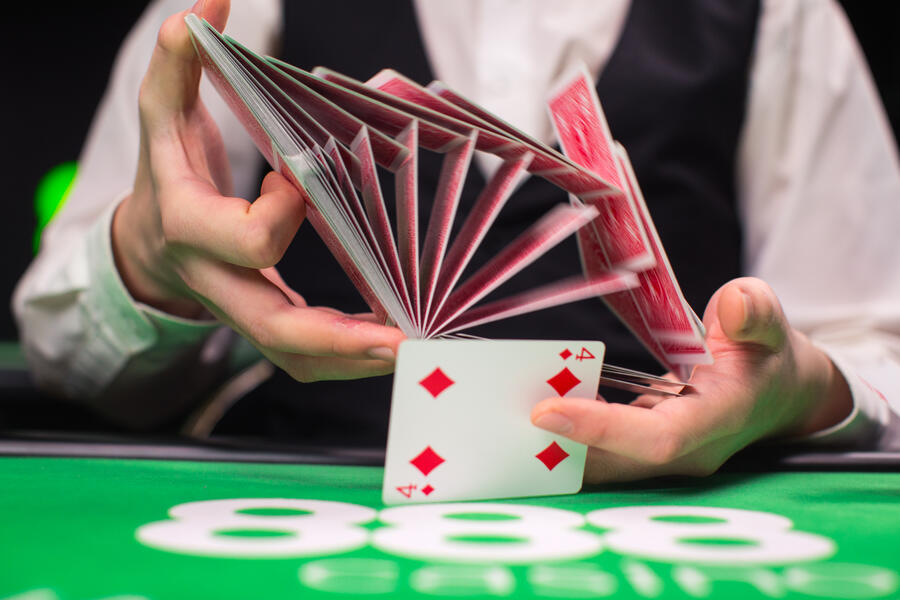Many blackjack players would like to tip a blackjack dealer but they don’t know how to go about doing it. In this article I will show you several ways to do it, including my favorite.
First let me address the question I often get from players about tipping.
“Why tip blackjack dealers since they get paid for dealing?”
It’s true there is no rule that says you must tip a blackjack dealer, just like there is no rule that you should tip a waitress, barber, hair dresser, taxi or Uber driver. However, let’s be realistic. Many hard-working people in the service industry earn a relatively low base salary and they depend on tips to make ends meet. Ditto for live casino dealers.
Am I saying you should always tip a dealer every time you play blackjack? Definitely not. I’ve had my share of surly blackjack dealers over my 45-plus years of playing blackjack. You know the type: gruff, never smiling, unfriendly, unhelpful, and just making you feel uncomfortable playing blackjack. My tip for them is nothing. I also make it a point to tell the floor supervisor that I stopped playing blackjack because his or her dealer was not at all focused on making the customer feel comfortable. On the other hand, if a blackjack dealer has been friendly, courteous, and helpful, I will tip.
There are several ways to tip a dealer when you play blackjack. One way is to simply place a chip on the layout at any time and tell the dealer “this is for you.” Most players who tip this way do so at the end of their playing session after they have colored up their chips and are ready to leave the table.
Another way to tip a dealer is to make a bet for her on your hand so if your hand wins, she will receive what you bet for her plus the winnings. Most players who make a tip bet for the dealer do so as follows.

Suppose you wagered a green chip ($25) on your hand and you also place a red ($5) chip just outside your betting circle. The cards are dealt and let’s suppose your hand beats the dealer’s hand. The dealer will place another green chip next to the original green chip in your betting circle (your winnings), and a red chip next to the original red chip outside the betting circle (the winnings for the tip bet you made for her). After the dealer finishes paying off all the other winning bets, and collects all the losing bets, she will pick up the two red chips outside of your betting circle, hopefully thank you, and drop them in the toke box. Essentially, the $5 bet you made for the dealer on your hand resulted in a $10 tip for the dealer because your hand won. If instead your hand lost, the dealer doesn’t get any tip but she should still thank you for trying. (If the hand loses, the red chip you bet for the dealer goes into the dealer’s chip tray and is now the property of the casino.)
Personally, I don’t like to make a tip for the dealer by placing a chip outside the betting circle because I have no control over that bet. Instead, I prefer inside the betting circle by placing the chip I want to bet for the dealer on top of (and slightly off center to) the chip I wagered on the hand. By doing this, I can control how much tip I give to the dealer.
For example, let’s suppose I wagered, say, $25 (one green chip), and then placed a red chip on top of the green chip, and the hand wins, I will give the dealer a single red chip as a win. I still own the original red chip I wagered for her because it was placed inside the betting circle. I usually let the red chip ride for the dealer on the next hand. If I win a few hands in a row, it gives the appearance that I’m a steady tipper, which can help you when it comes time to ask the table supervisor for a comp. Moreover, the supervisor will usually include the chip on top of your wager as part of your average bet and rate you at $30 per hand bettor instead of $25 per hand. This results in a slightly higher average bet and can result in slightly more comps. Additionally, this method of tipping the dealer also saves you 50 percent of the money compared to placing your tip bet outside of the betting circle. (Of course, if your hand loses, the original wager you made on the hand and any other chip you placed on top will be scooped up by the dealer and placed in the chip tray.)
Here are a few more suggestions on tipping to consider.
1. After you arrive at the table and the dealer gives you chips for your cash, take a large denomination chip (e.g., green $25 denomination), slide it to the dealer and ask her to exchange it for some reds ($5 denomination) or white ($1) chips. With smaller-denomination chips in hand, I would make a bet for the dealer early in your session. This lets the dealer know from the start that that if she is friendly and helpful, you will be tipping her.
2. It’s perfectly acceptable to base your tips on how much you are betting. For example, if you are a $5 or $10 bettor, I suggest tipping a few dollars; if you are a $25 bettor, I suggest a $5 tip.
3. Most card counters don’t tip because the edge they have is small, and if they tip, it could wipe out their monetary gain. However, periodically tipping a dealer gives the perception that you are an average “Joe” playing blackjack for fun and not for profit. This will help keep you under the casino’s radar (i.e., it’s good camouflage). My suggestion is to calculate what your theoretical hourly profit is for whatever card counting system you are using, and set aside a small percentage of that amount for tips. I also recommend you make the tip bet only when the table supervisor is nearby and can observe it. (Sometimes, I will also say something about making the bet for the dealer loud enough so the supervisor hears me.) Note: It’s been my experience that I could often use less costly ways to camouflage my card counting other than tipping a dealer. (See Chapter 10.12 in my Ultimate Blackjack Strategy Guide for non-punitive camouflage tips.)
